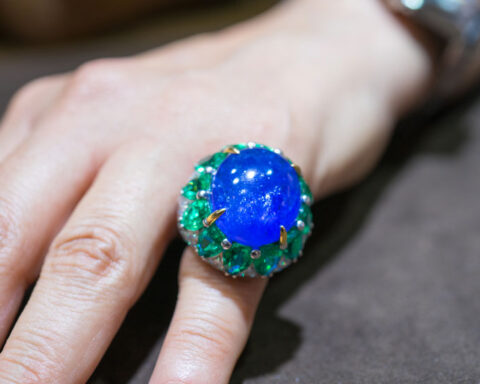The moonstone, so used for its pale shade, but little known by those who buy the jewels. Here is a quick guide to the moonstone, which is also considered stones of the month of June (along with pearls: why, since they are not minerals?) ♦
Let’s face it: how many of you have had the suspicion that the moonstone, has some stellar origin? In fact it is simply the name that you give to the feldspar in jewelry, variety of mineral that belongs to ortoclasio species. Said in this way, it loses much of the charm, it is true. Add to this that the feldspar is a very common substance, so that is located in the 60% of the earth’s crust. But beware: the feldspar to become moonstone must also contain adularia. This is the substance which gives a kind of inner glow to the stone. The name is strange and comes from the name of the Adular mountain, in Switzerland, today Gotthard.

Features. The most prized moonstones are clean, clear deep blue or iridescent. But they can also have a dominant color white, peach, pink, gray, brown, green and yellow.
Use. The stone has always been used in jewelry. The Romans believed that a stone was born from solidified rays of the moon and associated it to the celestial deities. In the past there were those who believed that looking at the stone you could recognize the crescent and moon phases. In India it is believed that moonstones promote pleasant dreams. In Arab countries women often wear moonstones sewn out in their robes, because the moonstone is a symbol of fertility. It was also a very popular during the Art Nouveau. The renowned French jeweler René Lalique created many jewelry using this stone.

Where is it. Many moonstones come from Sri Lanka, usually blue on an almost transparent background. The stones from India are more nebulous, often with a beige-brown background, green, orange or brown. They are also found in the United States, Brazil, Australia, Myanmar and Madagascar.

How you use. The classical moonstones are always cut in cabochon and the most important thing is the correct height of the gem, important to get the desired effect of light.
Warnings. The moonstone has a weak point: it is not very hard. It has a hardness of only 6 on the Mohs scale, so you have to handle it with care. But if it loses luster, it can lead to a jeweler, who will do shine the stone it again. Just like a moon rising again.






















